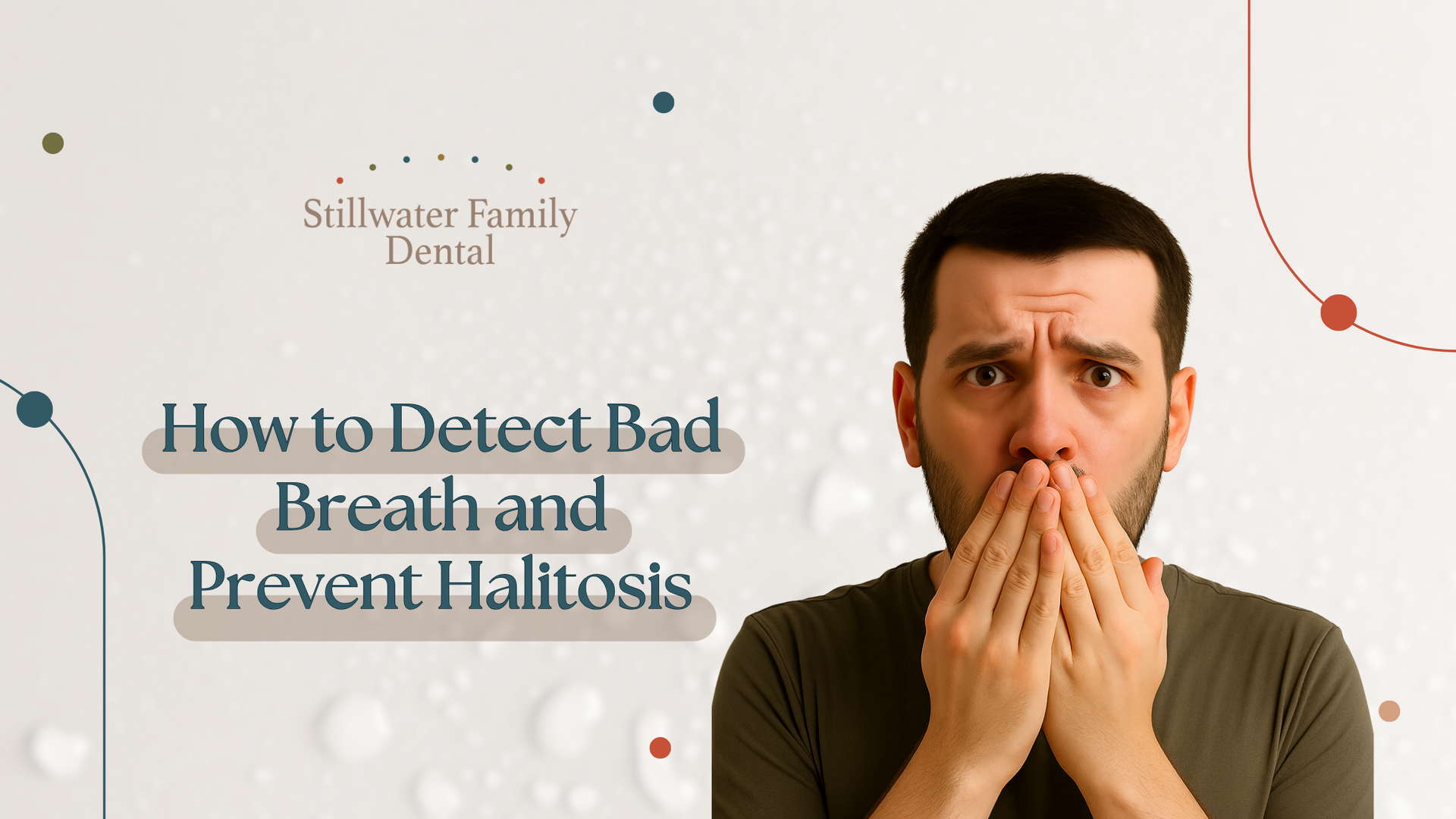How to Detect Bad Breath and Prevent Halitosis

Source: Dr. Marketing
If you worry about bad breath, you're not alone. Chronic bad breath, also known as halitosis, can negatively impact your confidence, social life, and oral health. Although the occasional morning breath is normal, persistent bad breath may be a symptom of an underlying health issue known as halitosis, which can sometimes require medical attention.
In this guide, we’ll show you how to perform a simple halitosis self-test and explain what may lead to halitosis. Here at Stillwater Family Dental, we are committed to helping you understand the most effective way to treat debilitating bad breath and find the most efficient way to achieve the smile you deserve.
What Is Halitosis?

Halitosis is the medical term for bad breath. Chronic bad breath that persists beyond the occasional morning breath may indicate an underlying oral or health issue. However, you should not be quick to self-diagnose, as the most common cause of bad breath is poor oral hygiene.
Without proper oral hygiene, such as brushing, flossing, and rinsing with mouthwash, you leave food particles in your mouth that lead to bacterial growth between your teeth, gums, and tongue. Prolonged bacterial growth in your mouth often intensifies symptoms of halitosis. However, serious issues associated with halitosis that may indicate an underlying health condition include:
- Oral Infections
- Poorly Fitted Dental Appliances
- Coated Tongue
- Tooth Abscesses
- Gum Disease
- Tooth Decay
Common Causes of Halitosis

One of the most common causes of halitosis is neglecting to maintain good oral hygiene. If you don’t brush and floss daily, you are at a significantly higher risk of experiencing bad breath. Failing to practice basic oral hygiene allows food particles to remain in your mouth, enabling bacteria to form in and around your teeth. This plaque eventually accumulates, creating pockets in your teeth and gums, which can lead to gum disease and chronic bad breath. Certain foods, such as onions, garlic, and spices, can also cause bad breath by entering your bloodstream, where they are then carried to your lungs, leaving unpleasant odors in your mouth.
Another common cause of halitosis is dry mouth. When your mouth produces less saliva, it becomes dry, often resulting in bad breath. One typical example of this is morning breath. Because you do not produce as much saliva while you sleep, you usually wake up with stinky breath. However, certain medications can cause chronic dry mouth, leading to long-term bad breath or halitosis. This is because saliva plays a crucial role in cleaning your mouth and removing the particles that cause these foul odors.
While many of the causes of halitosis are simply the result of poor hygiene or certain medications, chronic bad breath may indicate a severe underlying disease. Patients suffering from cancer, heartburn, or other disorders that prevent their bodies from processing food into energy often experience halitosis. This is why it is essential to consult a healthcare professional if you are experiencing prolonged halitosis that does not seem to be resolving with basic oral hygiene.
How to Test for Halitosis

One of the best ways to test for halitosis is by smelling your own breath. You can assess the scent of your breath by simply licking the inside of your wrist and smelling it. It is easiest for your nose to detect the scent of your breath when it is in contact with your skin; however, this technique is not always the most reliable method. You can also determine the scent of your breath by using a tongue scraper to scrape the back of your tongue and smell the scraper, or by asking someone you trust if it smells bad. Suppose you are still questioning whether your breath is experiencing halitosis after conducting these tests. In that case, you can ask your dentist for a Halimeter or Organoleptic test to determine if you are at risk.
The stench of halitosis varies, with some describing the smell as having a rotten egg or sulfurous aroma, which may be linked to digestive problems or sulfuric proteins in the mouth. Others may describe a fruity-scented odor that can be indicative of diabetes, or a sickly-sweet scent that may be the result of bacteria producing excessive mucus. Musty odors can indicate liver disease, while a fishy smell may suggest other metabolic disorders.
Ready to Freshen Your Smile?

If you are still experiencing prolonged halitosis despite regular oral health maintenance, don’t worry - you’re not alone. Our team at Stillwater Family Dental understands the importance of a fresh smile in your daily life. We offer professional screenings, cleanings, and personalized treatment plans to address the root causes of halitosis. Schedule your appointment today and take the first step to tackling your bad breath!









